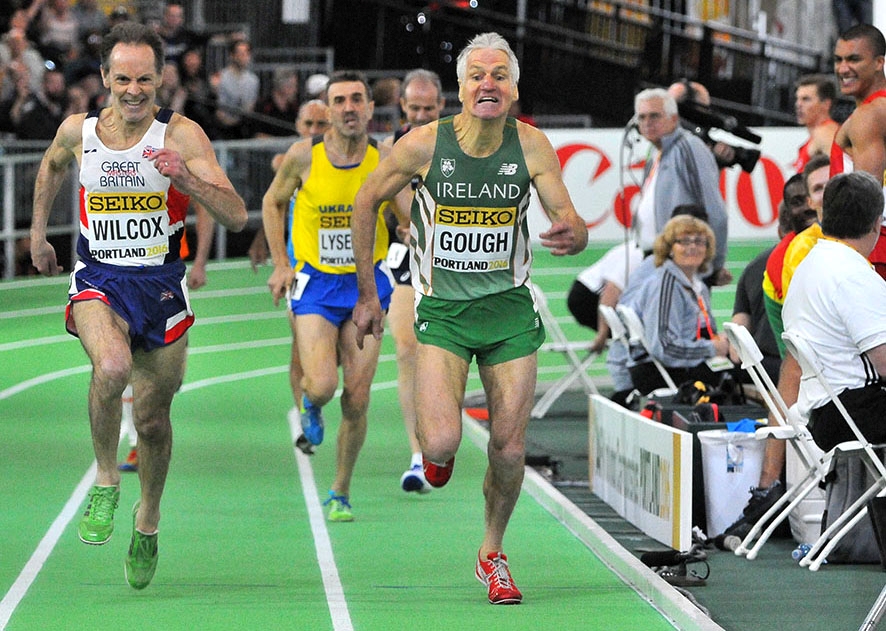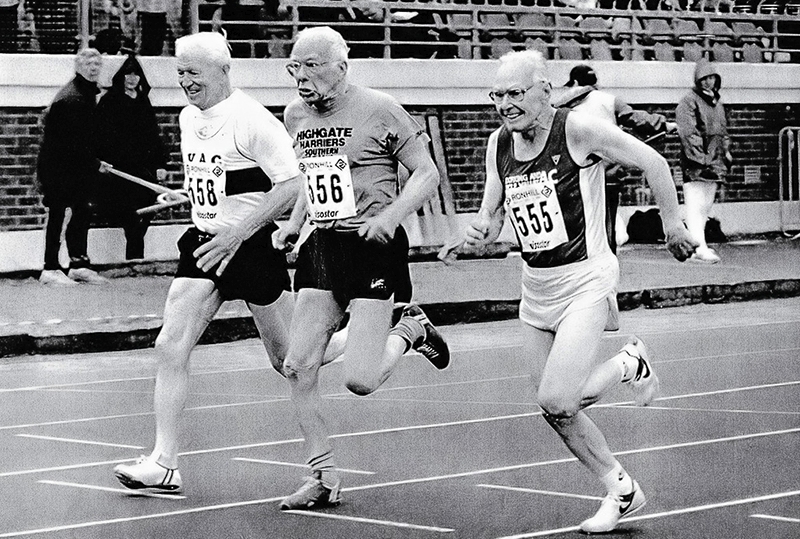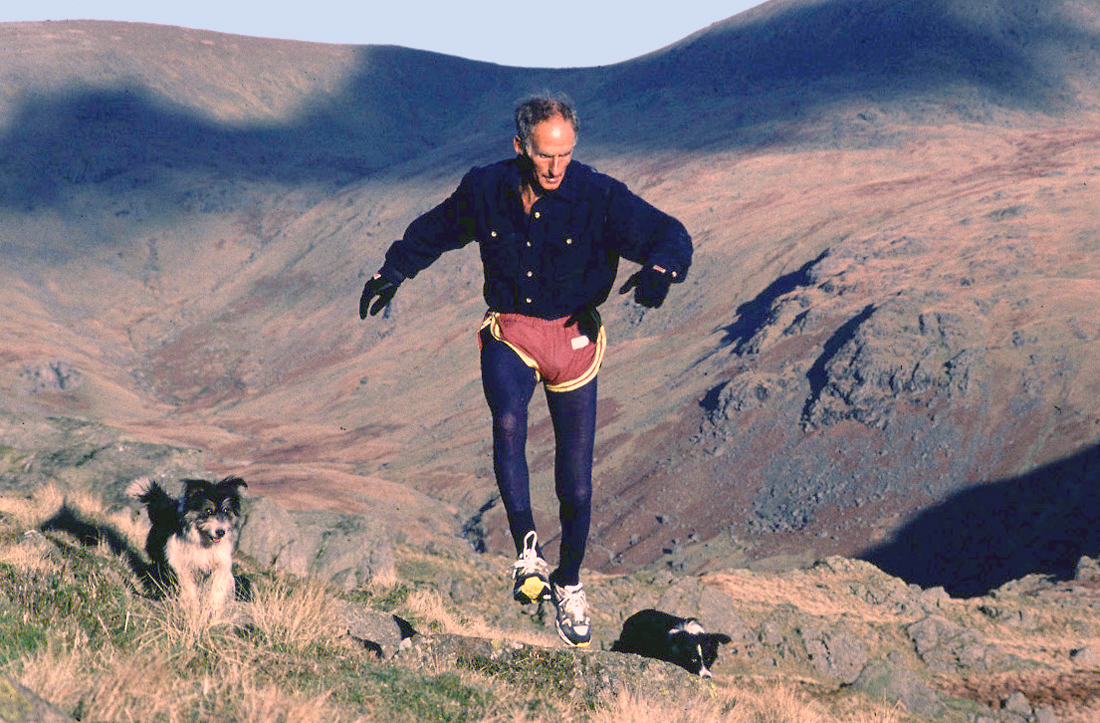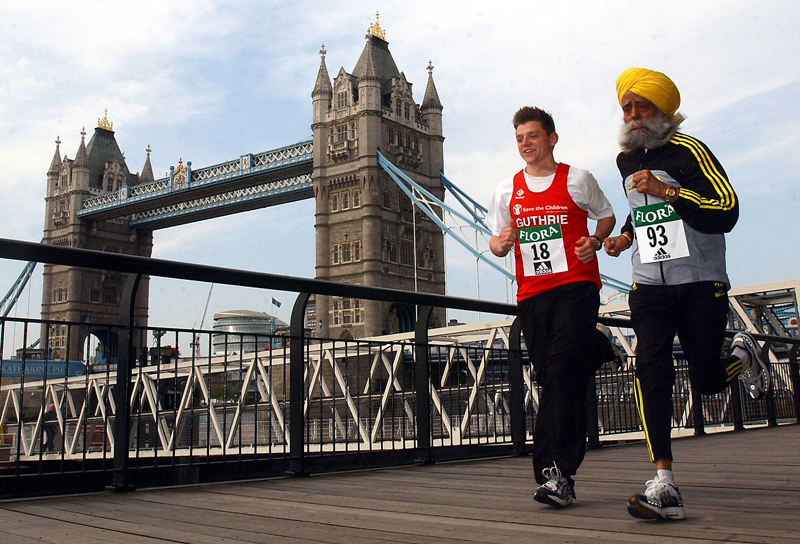You are viewing 1 of your 1 free articles. For unlimited access take a risk-free trial
Endurance performance: Holding back the years
 In the first of a two-part article, Andrew Hamilton takes a look at ageing, and using examples from cycling, explains how it affects endurance performance. The good news is that with the right approach, older cyclists, runners and triathletes can maintain and even increase performance levels over time...
In the first of a two-part article, Andrew Hamilton takes a look at ageing, and using examples from cycling, explains how it affects endurance performance. The good news is that with the right approach, older cyclists, runners and triathletes can maintain and even increase performance levels over time...
When the Ethiopian distance runner Miruts Yifter exploded onto the international scene winning double gold at 5,000 and 10,000 metres in the 1980 Olympics, he quickly acquired an appropriate nickname – ‘Yifter the Shifter’. Appropriate because unlike other runners on the international circuit, he seemingly had the ability to shift up a gear at any pace, to leave his rivals floundering in the sprint for the finish line.But what most captured the imagination of journalists was the fact that nobody knew for sure how old Yifter was – not even the man himself. Estimates varied between 33 and 42, but when repeatedly quizzed on the matter, Yifter apparently replied: “Why is everybody obsessed with my age? I count my chickens because someone can steal them. I don’t count my years because nobody can steal them!”
Although quirky, this scenario raises interesting philosophical questions about ageing. Just how important is your chronological age? Which changes in your body’s physiology and performance are inevitable, and which can be overcome with training and nutrition? In short, how much decline in performance can you expect as the years tick by, and what (if anything) can you do to minimise these performance losses?
The ageing athlete's body
Let’s start with a few facts about age and physical performance and get the bad news out the way first, which is that as you age, you’ll experience a steady decline in your maximal exercise capacity (note the emphasis on maximal – something we’ll return to later). Another inescapable fact is that your capacity to recover rapidly from prolonged or hard bouts of training or competition will also decline. Slower recovery means that the frequency of long/hard sessions has be less to allow proper recovery, with knock on implications for the way an older cyclist constructs his/her training programme.But what is going on in the body and why do these changes occur? The prime reason for the decline in maximal exercise capacity is a combination of decreased cardio-respiratory (heart, lung and circulatory) function and reduced muscle mass. In particular, scientific studies have shown that maximum heart rate declines as you age and - partly because of this fact - your maximum oxygen uptake capacity also declines by about 1% per year (although this decline may be stemmed with regular training – see later).
Maximum oxygen uptake is crucial because ultimately, all your muscular energy is derived by combining fuel (carbohydrate and fat) with oxygen. You can store carbohydrate in the form of muscle glycogen, and you can store fat as, well body fat! However, your body cannot store oxygen, which means that the faster you can take in, transport and use oxygen in the muscles, the more energy your muscles can produce and the faster and longer you’ll be able to keep riding!
Age-related changes in muscle mass/characteristics also have an impact on performance. The mass of fast-twitch muscle fibres (those needed to produce power during high-intensity exercise) is greatest during your 30s. After this peak point, there’s a decline in power of 3% per annum, which over time gradually slows down to a decline of around 1% per annum for both men and women. We know this to be true because research shows that resistance training, or activities requiring power (ie using predominantly fast-twitch muscle fibres), show a pattern of sharp decline after the age of 30, with the fastest loss of muscle power occurring during the fourth decade (31-40 years). After this point, a gradual but slower loss of power continues as we continue to age.
Performance effects of ageing
How does the combination of reduced maximal oxygen uptake, reduced muscle mass (especially fast-twitch muscle) and slower recovery manifest itself over time? Although it’s impossible to derive a precise timescale for how performance will change (everybody is unique and experiences different rates of biological ageing), most scientists agree that the peak of physical performance is usually reached somewhere between ages 20-35, with maximal power/strength being favoured earlier in this time range and maximal endurance being favoured later on.After the age of 35, both maximal endurance and strength will begin to decline, although the reduction in maximal endurance capacity will be much less pronounced. So, even though it would be incredibly boring, let’s suppose you managed to maintain exactly the same weekly cycling training programme (training volume, intensity and structure) through your 20s, 30s and 40s, and underwent regular testing in the lab. What would be the outcome? Well, research suggests you would observe the following key changes(1-4):
- *The first thing you would notice would be a decline in the maximum power you could generate in sprints, although the maximum sustainable power would remain the same. Towards the end of your 30s though, you would inevitably notice a reduction in maximum sustainable power, leading to slightly slower time-trial times for example. This trend would continue throughout your 40s, with maximal power continuing to decline at a relatively faster rate than endurance. By the end of your 40s, your maximum sustainable power will be around 15% less than your peak while your maximum sprinting power output will have dropped around 25-30%.
- *Another thing that will have become apparent is that your recovery between training sessions begins to take longer, even with identical rest and nutrition between your sessions. This slower rate of recovery is due to slower and less efficient responses within muscle cells, which can result in reduced production of key enzymes needed for restoration of full muscle function. Although the mechanisms are poorly understood, a build up of age-related damage at a molecular level appears to reduce the efficiency of muscle cells and genes within those cells to respond and adapt to any physiological stress (training) imposed on them.
Take heart - there's good news!
Reading the above, you might feel rather depressed that Mother Nature seems to have stacked the odds against you in your quest to maintain fitness as you age. But take heart because with the right training approach and the application of some simple scientific principles, there’s a fair chance that you could maintain most of your sporting performance, and perhaps even increase it!The reason for this is that the age-induced declines outlined above invariably relate to an individual’s theoretical ‘maximum exercise capacity’ rather than their current fitness level. What this means is that unless you’re already training at your absolute peak capacity and have already reached your maximum possible fitness level (unlikely), the chances are that with the right amount and types of training, you can steadily win back more fitness than time conspires to take away from you. Think of it this way; the size of the performance cake might be steadily declining as you age, but if you can take a bigger and bigger proportion of it each year, you could maintain your overall performance and possible even perform better than you did a few years ago.
Another reason to be cheerful is that while the size of the performance cake might decline as you age, scientific research suggests that the rate of decline seems to be much smaller for those who train regularly(5-9):
*In one study, scientists compared the changes in maximal oxygen uptake of fifteen well-trained master endurance athletes (average age 62), and fourteen sedentary control subjects of the same age, over an 8-year period. They found that the age-related decrease in oxygen uptake in the master athletes was around 5.5% per decade - half the rate of decline seen in the age-matched sedentary subjects. Moreover, the masters athletes showed no drop in maximum heart rates.
*In another study published two years later, researchers tracked the aerobic fitness levels of 24 master track athletes, aged 50-82, over a 10-year period. All the subjects remained active throughout this period, but only half carried on training and competing. Comparing the active and competitive athletes after 10 years, the average maximum heart rate had declined by around 7 beats per minute in both groups. However, while the maximum aerobic capacity showed a noticeable decline in the active athletes, those who trained and competed through the decade showed absolutely no decline at all!
*A study published in 2012 looked specifically at cycling performance, and makes encouraging reading. Highly-trained masters cyclists (156 males and 17 females aged 35-64 years) were tested for maximal cycling performance over a number of years. Of these cyclists, 50 were track/sprint cyclists while the remaining 123 were predominantly road cycling specialists. The researchers found that while peak anaerobic power declined at an average rate of 8.1% per decade, and anaerobic capacity declined at a very similar rate of 8.0% per decade, peak aerobic (ie endurance) power barely changed with age. Although the researchers measured a slight decline of 1.8% per decade, this decline was so small as to be deemed insignificant (see figure 1).
Figure 1: Age-related decline in energy systems

Note how the decline in aerobic power was very minor compared to peak and anaerobic power.
Use it or lose it
However, while these results are very encouraging, it’s important to realise that it’s the training itself that seems to slow down age-related declines in fitness. Reduce or stop the training when you’re older, and your (relatively high) fitness levels will decline very rapidly (see box on Miguel Indurain). To underline this point, a 2001 study in the Journal of the American Geriatric Society compared the decline in aerobic fitness of forty-two healthy, vigorously training, middle aged, older athletes (average age 64) and forty seven healthy sedentary men of comparable age over an 8-year period(10). What they discovered was that the seven athletes who continued to train vigorously had no significant decline in their maximum oxygen uptake. By contrast, maximum oxygen uptake declined by around 2.6% per year in those who trained only moderately hard and by 4.6% per year in those who only trained gently – nearly five times faster than in the vigorous peer group!Indurain’s decline: inactivity, not ageing

While some loss in performance with ageing is unavoidable, most of the declines in fitness observed in the general population are very little to do with biological aging and much more about physical inactivity. A perfect illustration of this is the 5-time Tour de France winner and Olympic Champion Miguel Indurain. During his racing years, Indurain’s stats made mightily impressive reading: His heart/lung system enabled him to transport around 7 litres of oxygen around his body per minute, compared to 3–4 litres for an ordinary person and 5–6 litres for fellow riders. His maximum cardiac output was measured at 50 litres a minute (a fit amateur cyclist's is about 25 litres per minute) while his maximum oxygen uptake capacity was reputed to be around 88ml/kg/min - in comparison, Lance Armstrong's was ‘only’ 83.8 ml/kg/min!
Fourteen years after giving up the sport, Indurain’s body mass had increased from around 80kg in his competitive years to 92.2kgs and his maximum oxygen transport capacity had fallen to 5.3 litres per minute. Meanwhile his maximum oxygen uptake capacity had also declined to 57.4 ml/kg/min. While Indurain is undoubtedly blessed with superior cycling genetics (and perhaps maintained more fitness than would be expected in lesser cyclists), the results suggested that the bulk of his fitness loss was due to inactivity and weight gain.
The magnitude of Indurain’s decline (over 20% per decade) in one of the most genetically gifted cyclists ever is far greater than that typically observed in studies on ordinary cyclists who continue to train as they get older (under 5% per decade), and points to his inactivity rather than simple ageing per se as the main factor.
The way forward for masters endurance athletes
A question commonly asked by older cyclists and runners is have I left it too late to develop high levels of cycling and running fitness? The answer to that is a resounding NO! In part 2 of this article, we'll look at why this is the case, and how you can not only maintain your endurance performance, but actually increase it as the years pass.References
- Sports Medicine 2003; 33(12):877-888
- Sportsmed 1990; 18:73
- Appl Physiol 1987; 62:625
- American J. of Ortho 2002; 31(2):93-98
- Appl. Physiol 1997; 82:1508
- Med Sci Sports Exerc 2001; 33:735
- Circulation 1991; 83:96
- Circulation 1993; 88:116
- Circulation 1994; 89:198
- J Am Geriatr Soc. 2001 Dec;49(12):1657-64
Newsletter Sign Up
Testimonials
Dr. Alexandra Fandetti-Robin, Back & Body Chiropractic
Elspeth Cowell MSCh DpodM SRCh HCPC reg
William Hunter, Nuffield Health
Newsletter Sign Up
Coaches Testimonials
Dr. Alexandra Fandetti-Robin, Back & Body Chiropractic
Elspeth Cowell MSCh DpodM SRCh HCPC reg
William Hunter, Nuffield Health
Keep up with latest sports science research and apply it to maximize performance
Today you have the chance to join a group of athletes, and sports coaches/trainers who all have something special in common...
They use the latest research to improve performance for themselves and their clients - both athletes and sports teams - with help from global specialists in the fields of sports science, sports medicine and sports psychology.
They do this by reading Sports Performance Bulletin, an easy-to-digest but serious-minded journal dedicated to high performance sports. SPB offers a wealth of information and insight into the latest research, in an easily-accessible and understood format, along with a wealth of practical recommendations.
*includes 3 coaching manuals
Get Inspired
All the latest techniques and approaches
Sports Performance Bulletin helps dedicated endurance athletes improve their performance. Sense-checking the latest sports science research, and sourcing evidence and case studies to support findings, Sports Performance Bulletin turns proven insights into easily digestible practical advice. Supporting athletes, coaches and professionals who wish to ensure their guidance and programmes are kept right up to date and based on credible science.











